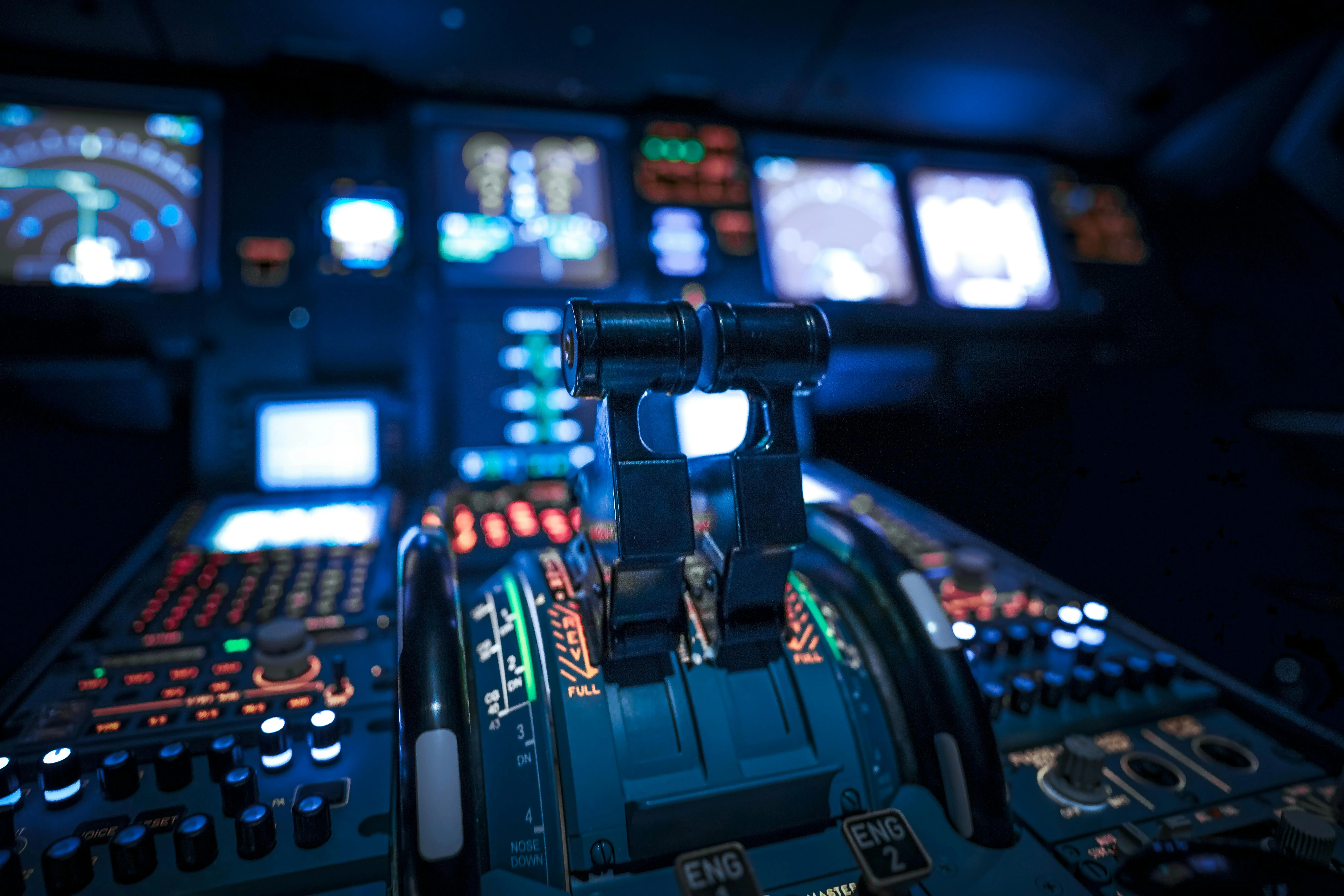The role of embedded systems in powering autonomous vehicles and robotics
Embedded computing is the backbone of autonomous vehicles and robotics, enabling real-time sensor fusion, AI-driven decision-making, and precision control. This post delves into the latest advancements in embedded processors, real-time software, and low-power computing for autonomous systems.

Eliza Miller
March 21, 2025
From self-driving cars navigating city streets to unmanned aerial vehicles (UAVs) scanning a disaster zone, autonomous vehicles and robots rely on sophisticated embedded systems as their brains and nerves. These embedded electronics – processors, sensors, controllers, and power management on board – execute the AI algorithms and control loops that allow machines to perceive, decide, and act in real time. As autonomy becomes more advanced, the role of embedded systems is only growing more critical. They must handle enormous data flows from sensors, run complex AI models for environment understanding, and control safety-critical actuators with precision, all under strict constraints on size, weight, power, and reliability (the famed SWaP and reliability challenges). In essence, embedded systems form the bedrock of AI-driven autonomy, and recent progress in this field is a major factor in the rapid advancements of drones, self-driving cars, and intelligent robots.
The Data Deluge and On-Board AI Processing
One of the defining characteristics of autonomous vehicles (AVs) is the sheer volume of sensor data they must process. A modern self-driving car might be equipped with multiple high-resolution cameras, long- and short-range radars, LiDAR units, ultrasound, GPS, and inertial sensors. The data streaming from these can easily reach gigabits per second. Studies have estimated that an autonomous vehicle could generate anywhere from 4 terabytes of data per hour up to 40 terabytes per hour in the future as sensor resolutions increase Even today, lower-level autonomy vehicles produce on the order of 20–40 GB per minute of operation. This “data deluge” must be tamed by the vehicle’s embedded computing platform in real time to make split-second decisions (like identifying a pedestrian and hitting the brakes).
Early approaches to this challenge sometimes relied on off-boarding data to the cloud for processing, but that is impractical for real-time control due to latency and connectivity limits. Instead, the trend is squarely toward high-performance on-board computing – essentially putting a data center’s worth of compute capability into a car or drone, within a tight power budget. As a recent academic review noted, real-time AI processing for UAVs either requires “high-performance on-board computing capabilities or reliable connectivity to remote processing… [but UAVs are] restricted by battery limitations”, making onboard processing the preferred choice in most cases. This has given rise to specialized embedded AI hardware: for example, NVIDIA’s Xavier and Orin systems-on-chip, which integrate GPU and AI accelerator cores, are widely used in autonomous vehicle prototypes to run neural networks for vision and sensor fusion. Similarly, AI drones might use custom FPGA-based accelerators or edge TPU (tensor processing units) to run object detection algorithms on-device.
The embedded software is equally important. Autonomous systems typically run a complex software stack on top of a real-time operating system (or a mix of real-time OS and Linux for higher-level tasks). This stack includes sensor processing pipelines, perception algorithms (object detection, tracking, localisation), decision-making/planning modules, and control systems. All these software modules must execute predictably on the embedded hardware. For instance, a drone’s flight controller loop might run at 100 Hz, while a vision-based object recognition might run at 30 Hz, and a high-level mission planning at 1 Hz. The embedded system orchestrates these concurrent workloads, often using middleware like ROS 2.0 (Robot Operating System) or AUTOSAR Adaptive in automotive, which are designed for reliability and real-time communication between processes.
Real-Time Decision Making and Control
Embedded electronics in autonomous platforms have a unique challenge: they are not just crunching data; they are directly controlling safety-critical actuators (steering, throttle, brake in vehicles; control surfaces and motors in UAVs; robotic arms in robots). This means the computing platform must deliver consistent, real-time performance. A latency of even a few extra milliseconds could be the difference in avoiding an accident. Therefore, these systems are typically built with redundancy and determinism in mind.
Take autonomous cars: many designs use dual or triple-redundant controllers for key functions, often with diverse hardware (e.g., one CPU-based unit, one GPU-based, one FPGA-based) running parallel algorithms that cross-check results. If one fails or disagrees, a fail-safe procedure can engage. Functional safety standards like ISO 26262 (automotive) and DO-178C (avionics) govern the development of these systems to ensure reliability. High-end embedded drive computers are often rated to Automotive Safety Integrity Level (ASIL) D, the highest safety level for road vehicles, meaning any single failure is extremely unlikely to cause a catastrophic event.
The control loops themselves rely on precise sensor inputs and timing. Embedded systems fuse data from multiple sensors (sensor fusion) to get an accurate picture of the environment. For example, in a self-driving car, an embedded module will fuse camera vision with radar and LiDAR to both detect and confirm an object (say, a tire on the road) and estimate its distance and velocity. This fused perception is then used by path planning algorithms running on the same or another module to chart a safe course. Finally, low-level controllers output commands to steering actuators or motor controllers. All this happens continuously, many times per second, showcasing the tight coupling between sensing, computation, and actuation in embedded autonomous systems.
Crucially, these systems must handle edge cases and degraded modes. If a sensor fails (perhaps a camera is blinded by glare or a radar gives spurious readings), the embedded system should recognise it and compensate (e.g., rely more on other sensors or enter a safe mode). This requires robust software diagnostics and sometimes AI algorithms that can estimate confidence in their own outputs.
From Unmanned Aerial Vehicles to Robotics
In the UAV domain, small drones face similar challenges with even more stringent power and weight limits. A battery-powered quadcopter has to carry an embedded computer, sensors, and communications gear and still fly for a reasonable time. Advances in embedded computing have enabled today’s prosumer and military drones to do onboard vision processing, object tracking, and even collaborative behaviours. For instance, AI-enabled drones can recognize and follow a target or avoid obstacles autonomously, all thanks to on-board neural network inference. One analysis highlights that for tasks like illegal logging detection by UAVs, a combination of advanced AI and IoT can yield a “fast, reliable, scalable real-time solution,” underlining the value of robust on-board processing in drones for immediate detection and decision.
Robotics in factories or warehouses similarly leverage embedded systems for autonomy. An autonomous mobile robot (AMR) forklift, for example, uses embedded LiDAR and vision systems to navigate and identify pallets. These robots typically use industrial-grade embedded PCs or controllers with AI accelerators to handle simultaneous localisation and mapping (SLAM) and dynamic obstacle avoidance on the fly. As with vehicles, safety is paramount – these robots often have 2D/3D LiDAR safety “curtains” processed by dedicated microcontrollers that can trigger an instant stop if an unexpected object or person is detected.
One cannot overlook the importance of power management and thermal design in all these embedded platforms. High-performance computing generates heat, and in the constrained space of a vehicle or drone, managing that heat is critical. Many autonomous car compute units are liquid-cooled. UAVs might spread computing across multiple boards to avoid a hot spot. Moreover, these systems often have to boot up quickly and reliably (an autonomous car should start like a normal car, without minutes of delay to initiate its AI systems).
The Road (and Sky) Ahead
The rapid pace of innovation in AI chips and embedded systems means the next generation of autonomous platforms will be even more capable. We’re seeing trends like: specialised ASICs for neural network inference (providing supercomputer-like AI performance at tens of watts), domain-specific architectures (e.g., vision DSPs optimised for image processing), and increased use of FPGA-based adaptive systems that can reconfigure for different tasks on the fly. These will likely be incorporated into vehicles and robots to further boost on-board intelligence.
Additionally, as vehicle-to-vehicle (V2V) and vehicle-to-infrastructure (V2I) communication grows, embedded systems will also manage communications and data sharing. For example, cars might share hazard information or drones might coordinate routes to avoid collisions. This implies future embedded platforms will act not only as individual brains but as nodes in a larger, distributed intelligent network. Real-time connectivity (possibly via 5G or specialised mesh networks) will complement on-board processing. Even so, autonomy demands that each unit can operate if cut off – which circles back to having strong on-board embedded AI.
It’s also worth noting that trust and security in these embedded systems is vital. They must be hardened against cyber attacks (nobody wants a self-driving car hacked or a military drone taken over). Thus, secure boot, encryption of critical data, and isolation of safety-critical processes are standard practice in designs. Many automotive-grade SoCs now include built-in security modules (TPMs, cryptographic accelerators) to ensure the integrity of the system.
In conclusion, embedded systems are the enablers of autonomy. Their evolution – packing more processing power, better sensors, and smarter power management into ever smaller and more efficient units – directly translates into more capable autonomous vehicles and robots. If FPGAs and microcontrollers are the “muscles and neurons,” embedded software is the “mind” orchestrating perception and action. Together, they allow an unmanned system to observe its world, understand context, and make decisions with minimal human input. As one industry article put it, AI-driven embedded systems excel at processing large amounts of data in real time, which “is a key requirement in areas like [autonomy]”. The coming years will undoubtedly bring even more integration (sensor fusion on single chips, etc.) and performance, enabling autonomous systems to tackle increasingly complex tasks – from urban driving to fully automated factories – safely and efficiently. The critical role of embedded electronics will only grow as we entrust more responsibilities to our robotic counterparts.

Sign up for expert insights on cutting-edge technology
Stay informed on innovations that power the future, directly from our team to your inbox.
.webp)








